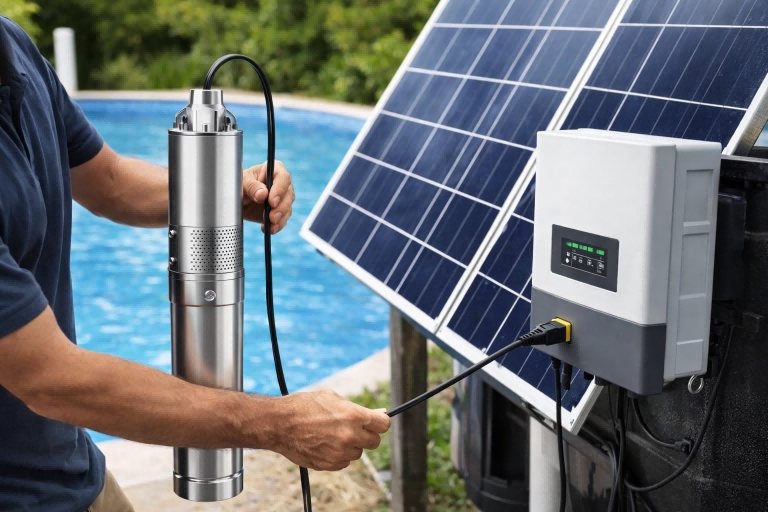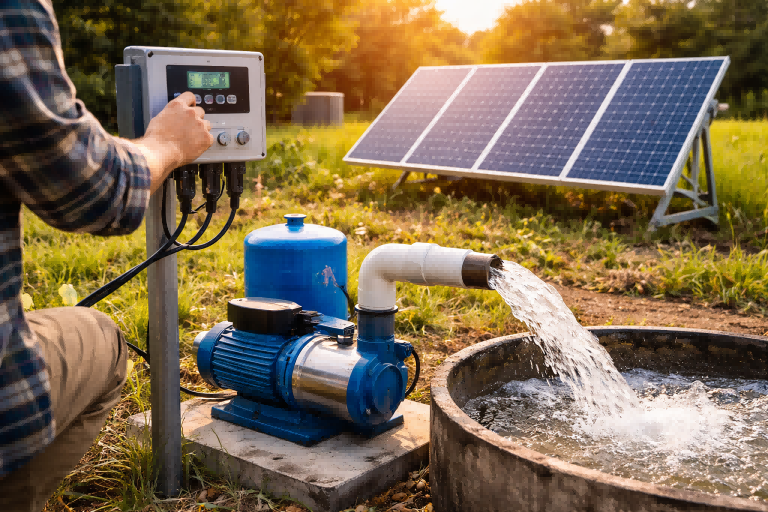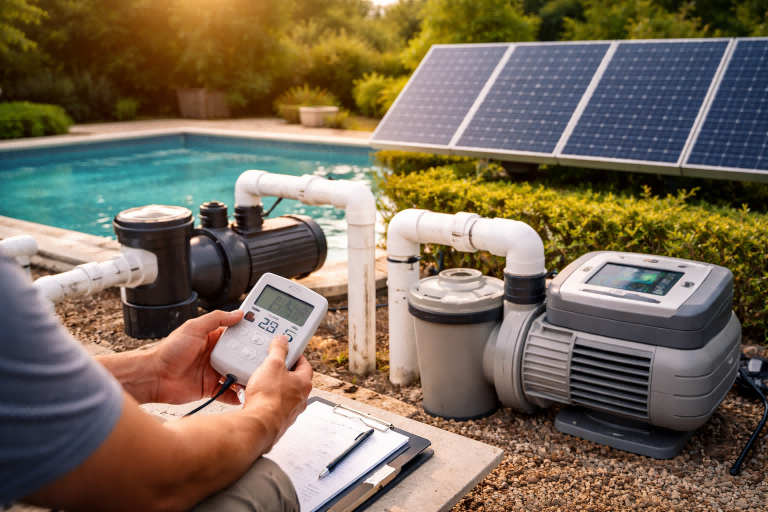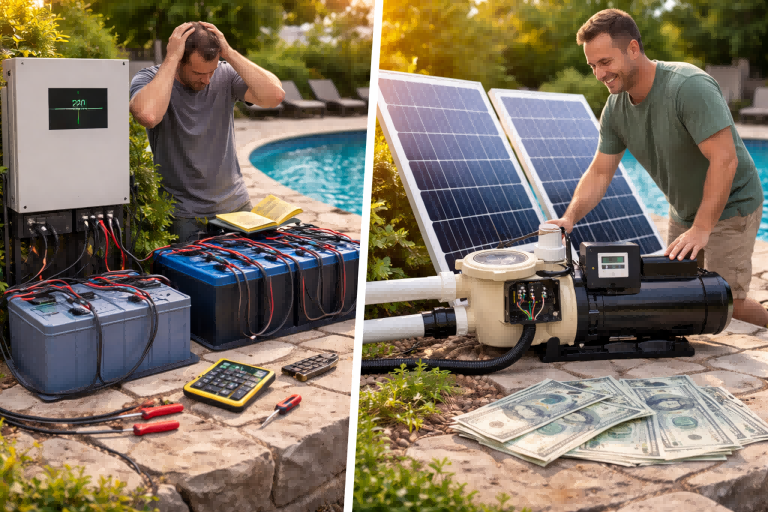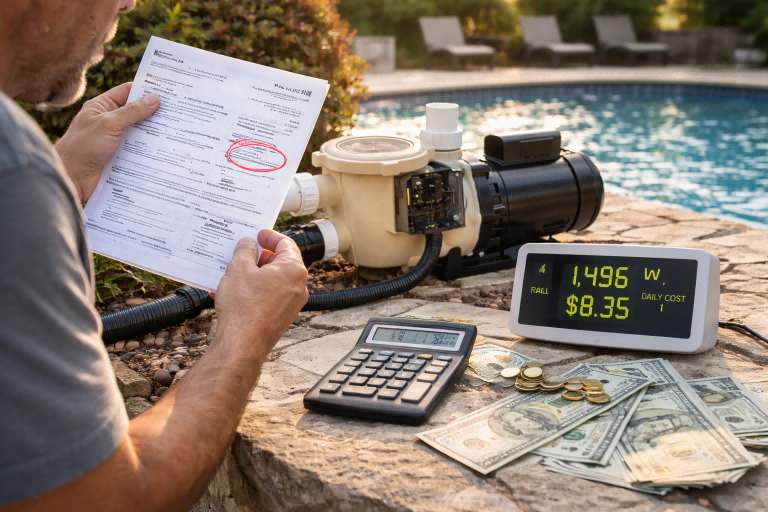Struggling with unexpected pump failures and costly downtime?
These sudden breakdowns can damage your reputation and hurt your bottom line.
Understanding a pump's true lifespan is the first step toward reliability.
A well-maintained, high-quality centrifugal pump can last between 15 and 20 years.
However, this is just an average.
The actual service life depends heavily on operating conditions, maintenance practices, material quality, and the nature of the fluid being handled.
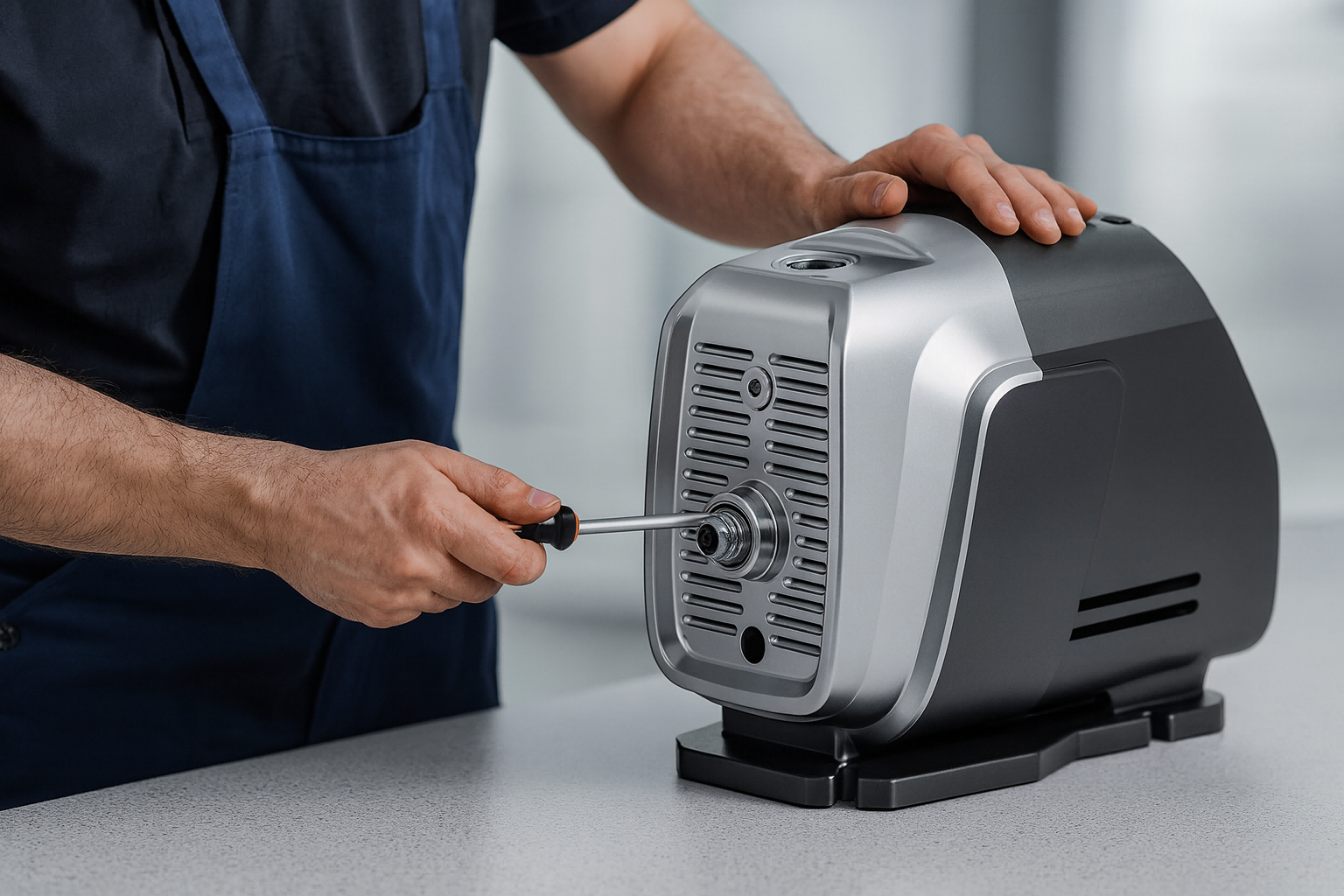
That 15-to-20-year figure is a great benchmark, but it's not a guarantee.
A pump in a harsh environment might fail in just a few years, while one in ideal conditions could exceed two decades of service.
So, what are the specific factors that separate a short-lived pump from a long-lasting workhorse?
Let's dive into the details that truly determine how long your investment will last, giving you the power to choose and maintain pumps for maximum longevity.
What is the Average Lifespan of a Centrifugal Pump?
Wondering if your pumps are failing prematurely?
It’s a common concern when trying to balance budgets and operational reliability.
Knowing the industry standards helps you set realistic expectations.
The industry-accepted average lifespan for a centrifugal pump is 15 to 20 years.
This assumes the pump was correctly specified for its application and receives regular, proper maintenance throughout its operational life.
The 15-to-20-year average is a critical piece of data for any distributor or importer.
It serves as a baseline for evaluating the performance of your current inventory and for making informed purchasing decisions.
When a pump lasts this long, it reflects well on the manufacturer's quality and the operator's maintenance protocol.
However, this is just the average.
Numerous variables can drastically alter this number.
Understanding these variables is essential for providing valuable advice to your own customers and for selecting suppliers that deliver on the promise of durability.
Let's explore the components that contribute to this average lifespan.
Key Components and Their Typical Lifespans
The overall life of a pump is a sum of its parts.
Not all components wear out at the same rate.
Knowing the lifecycle of individual parts is key to planning effective maintenance and avoiding catastrophic failures.
A failure in one small part can lead to a complete system breakdown if not addressed in time.
Bearings
Bearings are often the first major component to require replacement.
Their lifespan is heavily influenced by lubrication, load, and alignment.
Proper and regular lubrication is the single most important factor.
Contamination of the lubricant can quickly lead to bearing failure.
Mechanical Seals and Gaskets
Mechanical seals are critical for preventing leaks.
Their lifespan is highly dependent on the fluid being pumped, operating temperature, and pressure.
Abrasive fluids or running the pump dry can destroy a seal in seconds.
Gaskets and O-rings also degrade over time due to temperature and chemical exposure.
Impeller and Casing
The impeller and casing are the heart of the pump.
Their longevity is primarily determined by the fluid's properties.
Corrosive or abrasive liquids will wear down these components much faster than clean water.
Cavitation, which is the formation and collapse of vapor bubbles, can cause severe pitting and damage, drastically shortening their life.
Here is a table outlining the typical replacement intervals for these key components under standard operating conditions.
| Component | Average Lifespan (Operating Hours) | Primary Failure Causes |
|---|---|---|
| Bearings | 20,000 - 50,000 hours | Improper lubrication, misalignment, vibration |
| Mechanical Seal | 8,000 - 20,000 hours | Dry running, fluid abrasion, chemical attack |
| Wear Rings | 15,000 - 40,000 hours | Abrasive particles in fluid, cavitation |
| Impeller | 40,000 - 100,000+ hours | Abrasives, corrosion, cavitation, imbalance |
| Casing | 50,000 - 150,000+ hours | Corrosion, erosion, freezing |
Understanding these individual lifecycles allows for a proactive, predictive maintenance strategy.
Instead of waiting for a failure, you can schedule replacements, minimize downtime, and extend the overall life of the entire pump assembly.
Key Factors That Influence Pump Longevity?
Are some of your pumps failing years before others from the same batch?
This inconsistency is frustrating and makes inventory planning a nightmare.
Let's pinpoint the exact factors that control a pump's destiny.
A pump's ultimate lifespan is determined by five critical factors: material quality, operating conditions, maintenance frequency, system design, and the type of fluid being moved.
Mastering these elements is the key to maximizing durability.
It’s crucial to see a pump not just as a product, but as part of a larger system.
The interaction between the pump and its environment dictates its service life.
A high-quality pump can fail quickly in a poorly designed system, while a standard pump might last for decades under ideal conditions.
As a distributor, understanding these influential factors is your greatest asset.
It allows you to guide your clients toward the right product and educate them on proper usage, building a reputation for reliability and expertise.
Let's break down each of these core factors in more detail.
Quality of Design and Manufacturing
The foundation of a long-lasting pump is its initial quality.
This starts on the design floor and extends to the factory line.
Cutting corners in either of these areas will inevitably lead to a shorter service life.
- Engineering Tolerances: Pumps built with tighter tolerances generally have better efficiency and less vibration, which reduces wear on components like bearings and seals.
- Material Certification: Reputable manufacturers use certified materials that meet specific standards for strength and corrosion resistance. Sourcing from manufacturers with robust quality control, like our IQC and PQC protocols, ensures every component is up to spec.
- Balancing: Impellers must be precisely balanced, both statically and dynamically. An unbalanced impeller creates vibration, which is a primary cause of premature bearing and seal failure.
The Fluid's Impact
The liquid moving through the pump has a massive impact on its longevity.
A pump designed for clean water will not last long if it's used to move a chemical slurry.
- Corrosion: The fluid's pH level and chemical composition can corrode the pump's internal components. This is why material selection is so critical.
- Abrasion: Fluids containing suspended solids, like sand or silt, act like sandpaper on the impeller and casing, causing erosion that reduces performance and leads to failure.
- Viscosity and Temperature: Pumping fluids that are more viscous or hotter than specified can overload the motor and cause seals to degrade faster.
System Design and Installation
A perfect pump in a flawed system is set up to fail.
The surrounding pipework and installation are just as important as the pump itself.
- Pipe Strain: Misaligned or unsupported pipes put stress on the pump casing, which can lead to casing cracks, leaks, and bearing damage.
- NPSH (Net Positive Suction Head): If the available NPSH from the system is less than the required NPSH of the pump, cavitation will occur. This is extremely destructive to the impeller.
- Proper Foundation: The pump must be mounted on a solid, level foundation to minimize vibration. A poorly mounted pump will shake itself apart over time.
Recognizing these factors allows you to look beyond the pump's price tag and evaluate its true long-term value.
How Do Operating Conditions Affect Pump Life?
Ever noticed that identical pumps have different lifespans at different sites?
The working environment is often the hidden variable causing this discrepancy.
Understanding these conditions is key to predicting reliability.
Operating conditions, including duty cycle, environmental exposure, and system pressure, are dominant factors in a pump's life.
Running a pump outside its Best Efficiency Point (BEP) or in a harsh environment will drastically reduce its longevity.
A pump's data sheet tells you what it can do, but the installation site determines what it must endure.
The gap between these two realities is where premature failures happen.
Factors like ambient temperature, humidity, and exposure to dust or chemicals all contribute to wear and tear.
More importantly, how the pump operates within the system—whether it runs constantly or intermittently, at full speed or variable speed—has a profound effect on every component.
Guiding a customer to account for these conditions is a mark of a true expert.
BEP and Its Importance
Operating a pump at its Best Efficiency Point (BEP) is crucial for a long life.
The BEP is the point on the pump's performance curve where it operates most efficiently, with the least amount of vibration and radial load on the impeller.
- Running Far from BEP: When a pump operates too far to the left or right of its BEP, hydraulic forces become unbalanced. This puts a significant radial load on the shaft, which leads to increased shaft deflection.
- Consequences of Shaft Deflection: Even a tiny amount of shaft deflection can cause premature failure of the mechanical seals and bearings. It also increases vibration and energy consumption.
The Problem with Oversizing
It is a common mistake to select a pump that is too large for the application, thinking it provides a safety margin.
This almost always forces the pump to operate far from its BEP.
| Issue with Oversizing | Consequence for Pump Longevity |
|---|---|
| High Radial Thrust | Forces the pump to run far left of its BEP, causing shaft deflection. |
| Increased Vibration | Leads to premature failure of bearings, seals, and couplings. |
| Reduced Efficiency | Wastes significant amounts of energy over the pump's life. |
| Heat Buildup | Can cause issues with mechanical seals and motor windings. |
The Role of VSD Technology
This is where modern technology provides a powerful solution.
Variable Speed Drive (VSD) or Variable Frequency Drive (VFD) pumps address the problem of oversizing and off-BEP operation.
A VSD pump, like the intelligent models we specialize in, automatically adjusts its speed to meet the system's demand.
- Maintains BEP Operation: By slowing down, the pump can adjust its performance curve to match the system's requirements, allowing it to operate at or near its BEP across a wide range of flow rates.
- Reduces Wear: Lower operating speeds mean less wear on bearings, seals, and impellers. The soft-start feature also eliminates the mechanical shock of starting the motor at full voltage.
- Saves Energy: Running at a lower speed dramatically reduces power consumption. According to the pump affinity laws, halving the pump's speed can reduce its energy use by up to 87.5%.
By using VSD technology, you can ensure the pump is always operating under the best possible conditions, significantly extending its lifespan while providing major energy savings.
The Role of Maintenance in Extending Pump Lifespan?
Think pump maintenance is just an unnecessary cost?
This common misconception can lead to catastrophic failures and expensive emergency repairs.
A proactive approach to maintenance is an investment, not an expense.
Regular, proactive maintenance is the single most effective strategy for maximizing a centrifugal pump's lifespan.
A well-structured maintenance plan can easily double the service life of a pump compared to a run-to-failure approach.
Maintenance should not be an afterthought.
It is an ongoing process that protects your investment and ensures reliability.
For distributors, providing clear maintenance guidelines is a powerful value-added service.
It helps your customers succeed, which in turn builds loyalty and repeat business.
A pump that is well-cared-for becomes a testament to the quality of the products you sell.
Ignoring maintenance is like never changing the oil in a car; the initial savings are quickly erased by a much larger breakdown down the road.
Creating a Proactive Maintenance Schedule
A good maintenance plan is based on regular intervals and specific tasks.
It moves from simple daily checks to more involved annual inspections.
This tiered approach ensures that potential problems are caught early before they can escalate.
Daily/Weekly Checks
These are quick visual and auditory inspections that can be done by on-site staff.
- Listen for unusual noises: Grinding or rattling can indicate bearing problems or cavitation.
- Check for leaks: Inspect the mechanical seal and gaskets.
- Monitor vibration levels: A sudden increase in vibration is a clear warning sign.
- Check bearing temperature: Use an infrared thermometer. An overheating bearing is a sign of lubrication failure.
Monthly/Quarterly Tasks
These tasks require a bit more time and skill.
- Check lubricant levels: Top up or replace oil/grease as recommended by the manufacturer.
- Verify pressure gauge readings: Ensure the pump is operating within its expected parameters.
- Inspect couplings: Check for wear and ensure proper alignment.
Annual Shutdown Inspection
This is a more thorough inspection that may require a partial disassembly of the pump.
- Check impeller condition: Look for signs of wear, corrosion, or cavitation damage.
- Measure wear ring clearances: Excessive clearance reduces efficiency and should be corrected.
- Full shaft alignment check: Use laser alignment tools for the best accuracy.
Here’s a sample schedule you can adapt for your clients:
| Frequency | Task | Purpose |
|---|---|---|
| Daily | Listen for noise, check for leaks | Early detection of seal/bearing issues |
| Weekly | Check bearing temperature | Prevent catastrophic bearing failure |
| Monthly | Check oil level and condition | Ensure proper lubrication |
| Quarterly | Check vibration levels | Monitor for imbalance or alignment issues |
| Annually | Perform full laser alignment | Maximize bearing and seal life |
| Every 3-5 Years | Full pump rebuild | Replace all wear parts (seals, bearings, rings) |
By implementing a schedule like this, you transform maintenance from a reactive chore into a strategic tool for extending equipment life and ensuring operational peace of mind.
Can VSD Technology Extend a Pump's Lifespan?
Are your clients demanding more energy-efficient and reliable pumps?
The market is shifting away from traditional, fixed-speed models.
Embracing modern technology is essential to staying competitive.
Yes, Variable Speed Drive (VSD) technology significantly extends a centrifugal pump's lifespan.
It reduces mechanical stress, minimizes wear on key components, and ensures the pump operates under optimal hydraulic conditions.
The move towards intelligent pumping solutions is not just about saving energy; it's about fundamentally improving the way pumps operate.
A fixed-speed pump is a blunt instrument—it's either off or running at 100% speed, regardless of actual demand.
This leads to immense mechanical and hydraulic stress.
VSD technology, like the permanent magnet systems in our pumps, offers a smarter, more nuanced approach.
By precisely matching motor speed to system demand, a VSD pump runs more smoothly, more efficiently, and for a much longer time.
This is a key selling point for forward-thinking clients like Andrew in Australia who value both quality and long-term performance.
How VSD Reduces Mechanical Stress
The benefits of VSD on a pump's mechanical components are profound.
It addresses several of the most common causes of premature failure.
Soft-Start and Soft-Stop
A traditional pump starts with an intense physical jolt.
This across-the-line start-up creates a massive torque spike that stresses the motor shaft, coupling, and impeller.
The resulting pressure surge, known as water hammer, sends a shockwave through the entire piping system.
- VSD Solution: VSDs gently ramp up the motor speed. This eliminates the starting jolt and water hammer, preserving the integrity of the pump, pipes, and valves. The soft-stop feature provides a similar gentle ramp-down.
Reduced Operating Speeds
Most of the time, a system does not require 100% of the pump's capacity.
A VSD pump will spend the majority of its life running at a reduced speed.
- Impact on Bearings: Bearing life is inversely proportional to the cube of its speed. Halving the pump's speed can increase its theoretical bearing life by a factor of eight.
- Impact on Seals: Slower speeds mean less heat generated at the seal faces, extending their life and reducing the risk of leaks.
How VSD Improves Hydraulic Conditions
VSD technology also ensures the pump operates in a more favorable hydraulic environment.
This is crucial for preventing damage to the impeller and casing.
Maintaining Operation at BEP
As we discussed, operating away from the Best Efficiency Point (BEP) creates damaging radial forces.
System demand is rarely static; it fluctuates throughout the day.
- Fixed-Speed Problem: A fixed-speed pump can only operate at its BEP at one specific flow rate. At all other times, it is operating inefficiently and under high stress.
- VSD Advantage: A VSD pump can adjust its speed to shift its BEP to match the system's current demand. This means it spends far more time operating under ideal, low-stress conditions.
By integrating VSD technology, a pump is no longer just a brute-force machine.
It becomes an intelligent system that adapts to its environment, protecting itself from wear and tear while delivering unparalleled energy efficiency.
This combination of extended lifespan and reduced operating cost is a powerful proposition for any B2B customer.
Signs Your Centrifugal Pump Needs Replacement?
Worried about a critical pump failing without warning?
An unexpected breakdown can halt operations and lead to costly emergency orders.
Knowing the warning signs helps you plan for replacements in advance.
Key signs a pump needs replacement include a persistent drop in performance, excessive and new types of vibration, recurring seal or bearing failures, and visible corrosion or cracking on the casing.
Ignoring these signals risks a catastrophic failure.
Even the best-maintained pump will eventually reach the end of its service life.
The goal is to replace it on your own terms, not as a reaction to a sudden breakdown.
Being able to identify a failing pump is a critical skill.
It allows for scheduled downtime and planned procurement, which is far more efficient and less stressful than a middle-of-the-night emergency.
For distributors, helping your clients recognize these signs builds trust and positions you as a proactive partner in their success.
Let's review the most common indicators that a pump is nearing the end of its useful life.
Performance Degradation
This is one of the most reliable indicators of internal wear.
A pump's job is to create pressure and flow.
When it can no longer do its job effectively, it's a sign of a serious problem.
- Symptom: The pump cannot achieve the same pressure or flow rate as it did when it was new. You might notice longer cycle times or an inability to reach setpoint pressures.
- Cause: This is typically caused by internal wear. The clearances between the impeller and the wear rings have increased, allowing fluid to recirculate within the pump instead of being discharged. The impeller vanes themselves may also be eroded.
- Action: While replacing wear rings can sometimes restore performance, a significant and gradual decline often means the pump's core components are worn beyond economic repair.
Chronic Bearing and Seal Failures
Are you replacing the bearings or mechanical seal on the same pump every few months?
This is a classic sign of a deeper issue.
Bearings and seals are "symptom" components; their failure often points to a root cause elsewhere.
- Symptom: You are frequently replacing parts that should last for years.
- Cause: This could be caused by a bent shaft, a distorted or "warped" casing from pipe strain, or severe imbalance from a worn impeller. The pump's core geometry has been compromised.
- Action: If new bearings and seals fail quickly even after a professional installation and alignment, the cost of repeatedly fixing the symptom will soon outweigh the cost of a new pump that solves the root problem.
Escalating Noise and Vibration
All pumps vibrate, but a change in the level or sound of that vibration is a major red flag.
Your ears can be a powerful diagnostic tool.
- Symptom: The pump has developed a new grinding, rattling, or high-pitched whining sound. Vibration levels have noticeably increased over time.
- Cause: Grinding often indicates bearing failure. Rattling can be a sign of a loose impeller or debris in the pump. A high-pitched sound can be cavitation.
- Action: These are urgent warning signs. A pump that is making new, loud noises should be inspected immediately, as it may be on the verge of seizing up completely. A planned replacement is far better than a sudden, destructive failure.
When these signs begin to appear, it is time to start the conversation about a replacement.
It's an opportunity to introduce newer, more efficient technologies like VSD pumps that will not only solve the immediate problem but also provide long-term benefits.
Conclusion
A centrifugal pump's lifespan averages 15-20 years.
This is achieved through quality manufacturing, proper application, and diligent maintenance.
Technology like VSD can significantly extend this life while cutting energy costs.
FAQs
What is the life of a centrifugal pump?
A well-maintained centrifugal pump typically lasts 15 to 20 years.
Its actual lifespan depends on maintenance, operating conditions, and material quality.
What is the main cause of centrifugal pump failure?
Bearing failure is the most common cause of pump failure.
This is often due to improper lubrication, contamination, or excessive vibration.
How do you increase the life of a centrifugal pump?
To increase pump life, ensure proper alignment, maintain regular lubrication schedules, and operate the pump near its Best Efficiency Point (BEP).
How often should a pump be serviced?
A pump should have daily visual checks, monthly lubrication checks, and a full professional service annually.
More frequent service is needed in harsh conditions.
What are the three main parts of a centrifugal pump?
The three main parts are the impeller, which moves the fluid; the casing, which directs the flow; and the shaft assembly, which includes bearings and seals.
Can a centrifugal pump run continuously?
Yes, centrifugal pumps are designed for continuous operation.
However, constant running at full speed without a VSD can accelerate wear and increase energy costs.
What is the most important part of a centrifugal pump?
The impeller is arguably the most important part.
Its design and condition directly determine the pump's performance, efficiency, and hydraulic stability.
Does pump pressure affect lifespan?
Yes, consistently operating at excessively high discharge pressures (far from BEP) increases the load on the shaft, bearings, and seals, shortening their lifespan.


